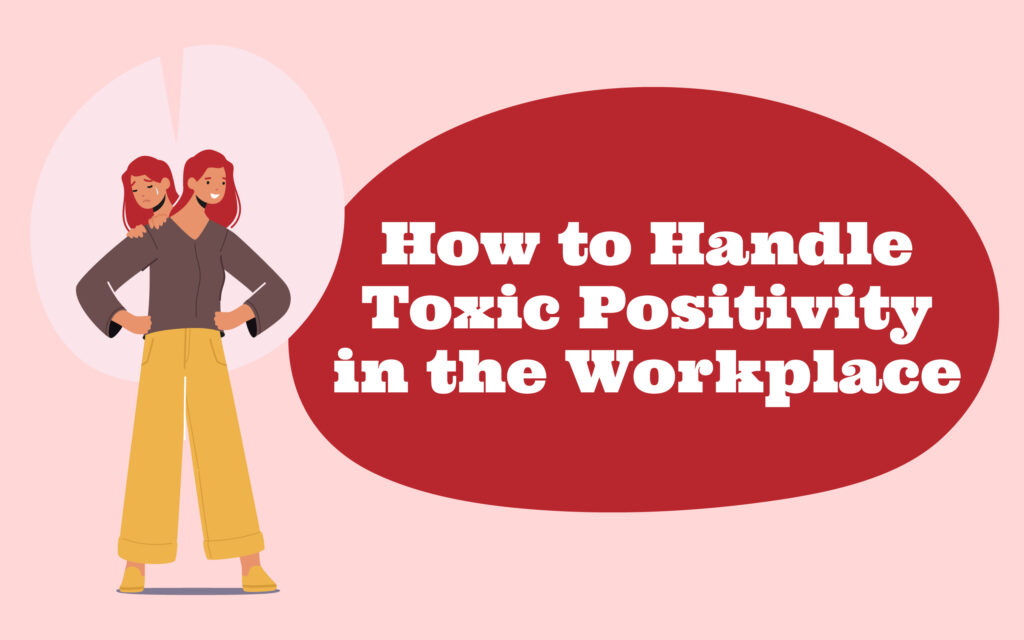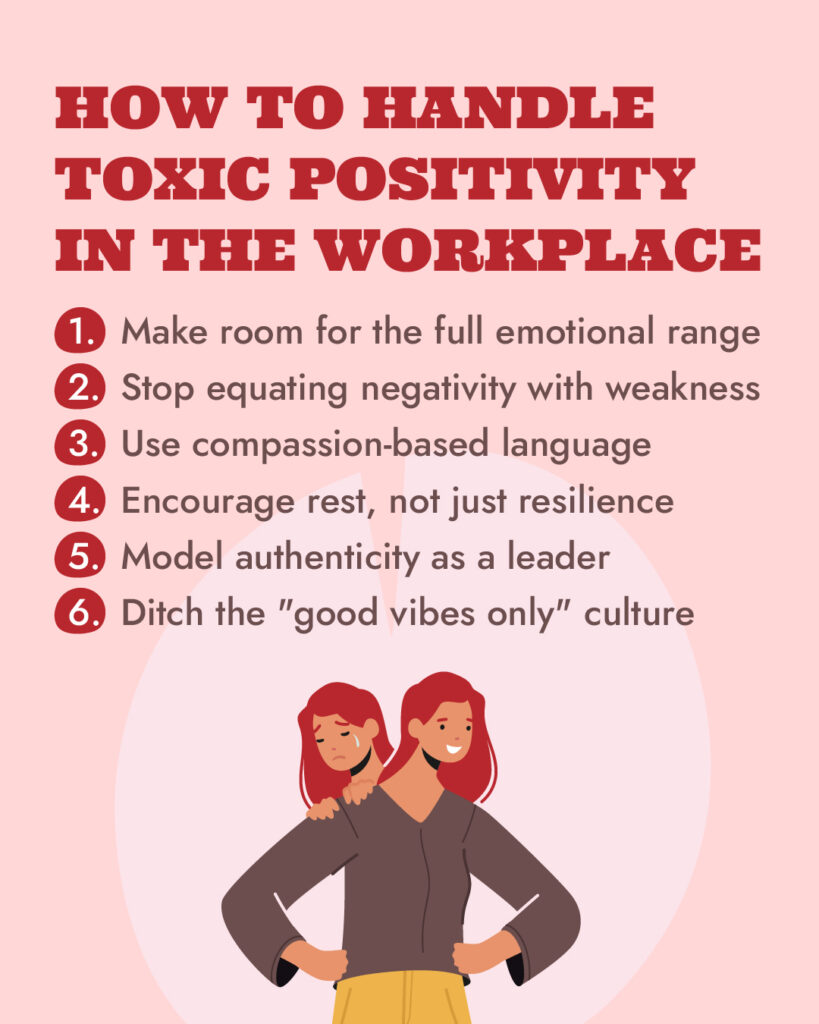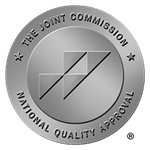How to Handle Toxic Positivity in the Workplace

While most of us would agree that a little positivity can go a long way, sometimes it crosses a line – like when honest emotions get dismissed in the name of “staying upbeat” or “keeping things light.”
That’s where toxic positivity comes into play. Though it’s often subtle and unintentional, it’s still damaging. The pressure to always appear cheerful can make it harder to be real, harder to connect, and ultimately, harder to be human.
Below, we’re unpacking what toxic positivity actually looks like, why it can be harmful, and how to shift toward a more grounded, emotionally honest work culture.
What is Toxic Positivity?
Toxic positivity is the belief that no matter how difficult or painful a situation is, you should maintain a positive mindset. It’s the emotional equivalent of slapping a smiley face sticker over a broken bone.
You might be thinking, “Wait… isn’t positivity a good thing?”
Yes, genuine optimism can be a powerful force for resilience – but when positivity becomes an expectation, or worse, a requirement, it starts to silence real emotions. It dismisses discomfort instead of making space for it. Over time, it sends a clear message: You’re not allowed to feel what you feel here.
Examples of Toxic Positivity in the Workplace
Toxic positivity in the workplace can be subtle, and often comes from a well-meaning place. It can come from the coworker who wants to lift the mood, the manager trying to keep things upbeat, or the company culture that values “good vibes” over honest communication. But even when it’s not meant to harm, this kind of forced cheerfulness can leave people feeling isolated, dismissed, or emotionally unsupported.
Here are some common examples of what toxic positivity might sound like in a workplace:
- “Everything happens for a reason.”
- “At least you still have a job… some people have it worse!”
- “Let’s not dwell on problems… let’s look on the bright side!”
- “This is a positive workspace – leave the negativity at the door.”
- “We’re a family here, we don’t complain.”
- Responding to burnout or overwhelm with, “You’ve got this! Just power through!”
While these phrases may be intended to uplift, over time they can create an environment where stress, grief, and frustration are silently endured rather than acknowledged or addressed. And when people don’t feel safe expressing real emotions, connection and trust begin to erode.
How Can Toxic Positivity in the Workplace Be Harmful?
Toxic positivity creates pressure to mask real issues, leading to chronic stress, emotional exhaustion, and disconnection. Instead of feeling supported, employees may feel dismissed, shamed, or even gaslit for having a hard time. When people don’t feel safe to express honest emotions, they often stop speaking up at all.
And the harm doesn’t stop at the individual level. A culture that ignores discomfort in favor of “staying positive” can:
- Suppress creative problem-solving
- Reduce trust among coworkers
- Breed resentment and burnout
- Prevent leaders from hearing about real concerns
- Undermine team morale and authenticity
Real connection doesn’t come from pretending things are okay. It comes from feeling safe enough to say when they’re not.
How to Avoid Toxic Positivity in the Workplace
Confronting toxic positivity doesn’t mean rejecting hope or optimism. It means making space for emotional honesty and recognizing that positivity is most meaningful when it’s rooted in reality, not used to avoid it.
Whether you’re a team member trying to navigate a cheerfulness-at-all-costs culture, or a leader who wants to create a more supportive environment, small shifts in language and behavior can go a long way. The goal isn’t to drain energy from the room – it’s to bring more truth into it.
Here are a few ways to start making that shift:
-
Make room for the full emotional range.
You don’t need to fix someone’s pain to hold space for it. Validating a colleague’s frustration or sadness with something as simple as, “That sounds really hard – want to talk about it?” can be far more supportive than brushing past it with a generic pep talk.
-
Stop equating negativity with weakness.
There’s strength in self-awareness. When someone shares that they’re overwhelmed, tired, or struggling, believe them. Let the workplace be a space where people don’t have to hide what they’re going through.
-
Use compassion-based language.
Phrases like “I hear you,” “That makes sense,” or “Thanks for telling me” can create a sense of emotional safety. They remind people that they’re not alone, and they don’t have to perform positivity to belong.
-
Encourage rest, not just resilience.
Resilience is valuable, but not when it comes at the cost of burnout. Be the person who encourages healthy boundaries, real recovery time, and genuine support – not just pushing through for the sake of productivity.
-
Model authenticity as a leader.
If you’re in a leadership role, your vulnerability matters. When you’re willing to be honest about your own challenges, you create permission for others to do the same. And that’s where real trust begins!
-
Ditch the “good vibes only” culture.
Replace performative positivity with meaningful practices. Make room for feedback, hard conversations, and the full spectrum of human experience. Emotional depth isn’t a liability – it’s a sign of a culture with integrity.
Mental Wellness Center in Orange County, CA
At Barn Life Recovery, we believe healing starts when you can show up as your full self. That means all emotions are welcome here – not just the easy ones. Contact us to learn more about our treatment programs and take the first step toward loving life again.











